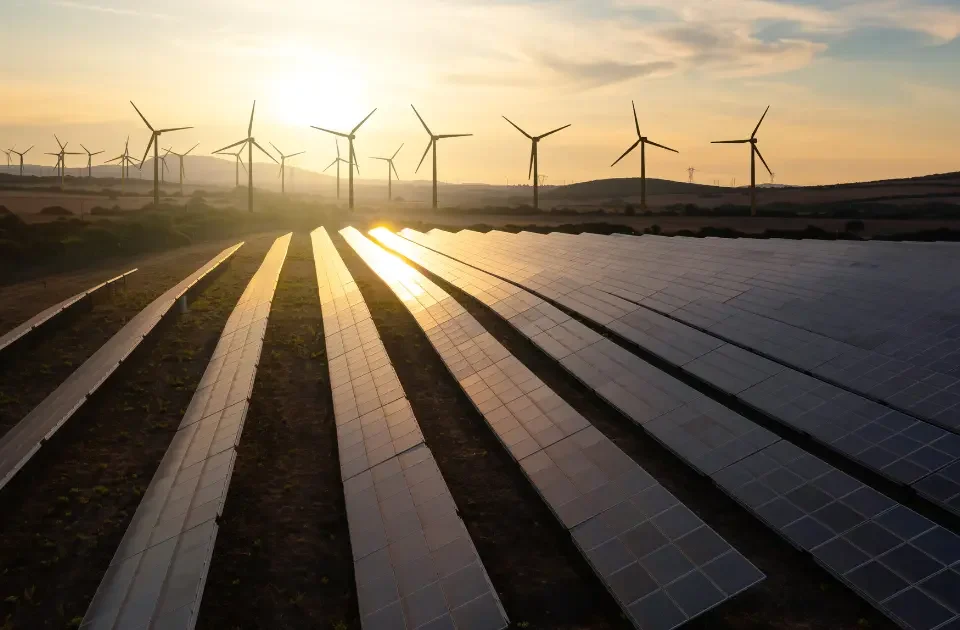Wind energy has rapidly gained prominence as a clean and renewable energy source, contributing significantly to reducing greenhouse gas emissions and combatting climate change. However, its intermittent nature, with fluctuations in wind speeds, poses a challenge to grid stability. Bridging the power gap between wind energy generation and grid reliability is a critical aspect of maximizing the benefits of this sustainable energy source.
The Intermittency Challenge
Wind turbines generate electricity when the wind blows, but they cannot operate without it. Wind speeds can vary widely, even within short timeframes, leading to fluctuations in power output. This intermittent nature of wind energy can strain the grid, potentially leading to instability and disruptions if not managed effectively.
Grid Stability and Reliability
Grid stability refers to the ability of an electrical grid to maintain constant and consistent electrical frequency and voltage. A stable grid ensures a reliable supply of electricity to consumers, prevents power outages, and supports the integration of renewable energy sources like wind power.
Solutions for Bridging the Power Gap
Several strategies and technologies are employed to bridge the power gap between wind energy generation and grid stability:
- Energy Storage: Energy storage systems, such as batteries, are essential for storing excess energy generated by wind turbines during periods of high wind speed. This stored energy can then be released during lulls or when demand is high, ensuring a steady supply of electricity.
- Grid Integration: Advanced grid management and control systems are crucial for integrating wind energy seamlessly into the grid. These systems can anticipate fluctuations in wind power and adjust other energy sources accordingly to maintain grid stability.
- Hybrid Systems: Combining wind energy with other sources like solar or natural gas in hybrid power plants can help maintain a consistent electricity supply. These hybrid systems can switch between energy sources based on availability and demand.
- Advanced Forecasting: Accurate weather forecasting is vital for predicting wind patterns and optimizing the use of wind energy. Improved forecasting technology allows grid operators to anticipate fluctuations and adjust energy generation accordingly.
- Demand Response Programs: Implementing demand response programs can help align electricity consumption with the availability of wind energy. Consumers can be incentivized to reduce electricity usage during periods of low wind power generation and increase consumption when it’s abundant.
Storage Technologies for Wind Energy
Energy storage technologies are pivotal in bridging the power gap with wind energy. Several types of energy storage systems are used in conjunction with wind farms:
- Battery Storage: Lithium-ion batteries and other advanced battery technologies store excess wind energy for later use. These systems are becoming more efficient and cost-effective.
- Pumped Hydro Storage: This technology uses surplus wind energy to pump water to a higher reservoir. When electricity is needed, the water is released, flowing downhill through turbines to generate electricity.
- Flywheel Energy Storage: Flywheels store kinetic energy generated by wind turbines and release it when needed. They provide rapid response times and are useful for short-duration energy storage.
- Compressed Air Energy Storage (CAES): CAES systems store compressed air in underground caverns and release it through turbines to generate electricity. They offer relatively high storage capacities.
The Future of Wind Energy and Grid Stability
As wind energy continues to expand globally, the integration of advanced technologies and grid management practices will become increasingly important. Future developments may include:
- Next-Generation Batteries: Research into advanced battery technologies, such as solid-state batteries, promises higher energy density, longer lifespans, and faster response times.
- Improved Grid Management: Smart grids equipped with artificial intelligence and machine learning capabilities will enhance the real-time management of energy supply and demand, optimizing grid stability.
- Energy Market Reforms: Regulatory changes that value grid services like flexibility and reliability will incentivize the adoption of energy storage systems and other grid-stabilizing technologies.
Wind energy is a valuable contributor to a sustainable energy future, but its integration into the grid must be managed effectively to ensure reliability and stability. By combining wind power with advanced storage solutions and grid management practices, we can bridge the power gap and harness the full potential of this clean and abundant energy source while building a resilient and sustainable energy infrastructure for the future.




